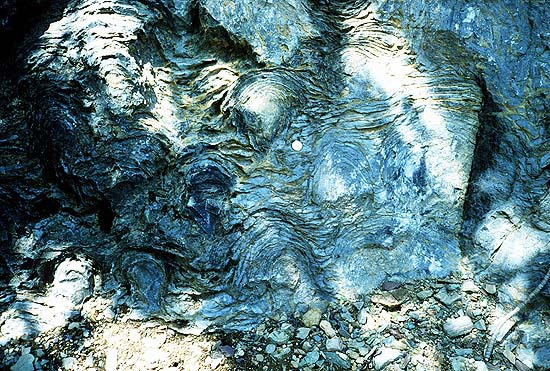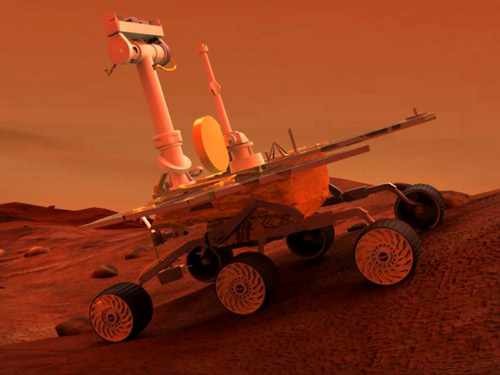Whether yes or no, the answer is profoundly significant for humanity.
One of the advantages of living in Silicon Valley is being close to the SETI Institute . Formerly a part of NASA, SETI is the World's HQ for the search for extraterrestrial intelligence. I hear lectures at their headquarters in Mountain View, California — those are free and online here) and I've read several books on the subject. (Do not confuse the SETI Institute's high quality science with the nutty, erroneous reports of alien sightings in the tabloids.)

Above is the proposed Square Kilometer Array.
Each and every day it will collect an exabyte of data — more than flows on the entire internet.
Here in brief are my opinions.
1) Are We Alone in the Universe?
Probably not. It is exceedingly unlikely that we are the only intelligent civilization in the Universe. The visible Universe alone contains 1022 stars.
Life on Earth began almost as soon as it could — about 3.7 billion years ago. Fossilized stromatolites (bacterial colonies) are known to be 3.4 billion years old. Life's components (all the chemical elements, water, amino acids) are readily visible in space. The processes that gave rise to life are probably common.
2) How about intelligent life?
While living organisms (protists like bacteria) might be commonly found on exoplanets (planets orbiting stars other than the Sun; 400 are already known), complex life is probably far less common. I am persuaded by the arguments of Peter Ward and Donald Brownlee in their book Rare Earth . The Rare Earth Hypothesis is summarized in Wikipedia and is essential reading. Here it is in a nutshell.
Look at the history of life on Earth. Although simple life (bacteria) began almost immediately, it took another three billion years for multicellular life to evolve. What was required was great stability of temperature, pressure, liquidity of water, absence of radiation, presence of energy sources, and lack of global sterilizing events for billions of years.

Fossilized stromatolites, one billion years old.
Complex (multicellular) life and (even more so) intelligent life, hence, requires for its evolution immense stability and sustainability over cosmologic time periods. The required continous stability of favorable conditions over geologic eons is apt to be rare.
On Earth the evolution of multicellular life seems to have required all of the following: a home star (the Sun) of just the right type, located in a favorable zone in our galaxy; a host planet in a continuously habitable zone; the continuous presence of liquid water; an abundance of land; a large moon capable of stabilizing the planet's rotational obliquity, and hence stabilizing its seasons; massive planets like Saturn and Jupiter as garbage collectors to remove sterilizing comet/asteroid impacts; a magnetic field to shield life from ionizing radiation; plate tectonics to provide land formation, mountain building and geologic recycling; photosynthesizing organisms cranking out oxygen for billions of years (and removing CO2); and an ozone layer to shield land-dwellers from life-annihilating UV radiation.

The Drake Equation (in French but with nice pix; note T (temps in French) = L in English = time before a technological civilization annihilates itself.) If all these factors are required for complex life, then it may be exceedingly rare. (The Drake Equation formalizes this estimate as the product of six probabilities. )
Now, multiply the exceedingly low probability of intelligent life by 10 22 . That's how many intelligent civilizations evolved out there.
I interviewed Dr. Jill Tarter, the Director of SETI, before her lecture at the (Xerox) PARC research campus in December, 2009. Foremost among my questions was her opinion of the Rare Earth Hypothesis.
Here is her answer (paraphrased): The evolution of complex life on Earth was highly contingent. It involved a tree of many branching probabilities. Which of those branches is essential for life (and estimates of their probabilities) is anyone's guess. The only way to find out is to explore the Universe and find out. (Well-stated!)
3) That intelligent civilizations are rare has an important implication. It means they are apt to be quite distant. I comment to Dr. Tarter - it all boils down to how far away they are and what their technologic powers are. She adds - Yes, but how far away in both distance and in time. By that she means that an ETC (extraterrestrial civilization) might have existed billions of years before mankind was listening or perhaps their signals will arrive here long after mankind has perished.
4) I heard SETI founder Professor Frank Drake lecture recently. One take-away was this gem. Among all the factors in his famous Drake Equation, which estimates the number of intelligent civilizations in the Milky Way (which contains 200 billion stars), the dominating factor is L, the average lifetime of a technologic civilization capable of interstellar communication. If the average time L is short before self-destruction, then we are apt to be alone. (The technical lifetime of our civilization so far is about 100 years, dating back to the invention of radio (since that’s how we listen for ET).
If, on the other hand, the average life L is long, say millions of years, then ETCs (ET civilizations) are apt to be common. So, the entire SETI probability (in Prof. Drake's view) boils down to how long intelligent civilizations survive.
(Prof. Drake showed us his car's license plate: it reads N = L; N is the number of ETCs in the Milky Way; L = their average survival in years.)
5) So, how long will humanity survive and in what form? Also does SETI have anything to teach us about our work on Earth.
The Universe is probably dominated by celestial bodies that are barren and lifeless. Strewn among those are occasional planets on which simple life has arisen. Far, far rarer still are planets on which intelligent life has arisen. (In three years the Kepler space telescope will tell us how many Earth-like planets are in our neighborhood. And a tiny fraction of Earth-like planets will have ETCs.)
The possibility of communicating with another such civilization is directly related to the length of our survival and of their survival. 
Our survival hinges directly on the wisdom of our stewardship of Planet Earth. As H. G. Wells said, History is a race between education and catastrophe. Either we will use our technology for the benefit and sustainability of our precious biosphere, or we will have been one of Nature's great failed experiments.
6) Say we survive the perils of the 21st century (overpopulation, environmental destruction, resource depletion, biosphere degradation, incompetent management of weapons of mass destruction) what then? Will humans be the ones to populate the galaxy and perhaps establish communication with the other long-lived citizens of the Universe (I like David Lonely Planets Grinspoon's descriptor for them - the Immortals).
My view is No! Frail, unmodified Earth-evolved humans won't be the Immortals that explore and colonize the galaxy. The explorers of outer space will be the same breed as they are now, descendants of NASA's space probes that have rolled on the plains of Mars and landed on Saturn's moon Titan.

Compare the pace of evolution of computers and robots to the pace of evolution of humanity. It's plain who the winners will be and who will be the explorers of space. (See my article Let the AIs, not us, formulate a billion-year plan! .)
If true, this has great implications for both SETI and for humanity. For SETI the implication is that long-lived civilizations will not be confined to Earth-like planets. Rather, those planets will merely have been cradles for ETCs. ETCs themselves will have long since moved to other locations for a) resources (large, short-lived stars for increased photon flux) or b) exploration and communications (eg near gamma-ray bursters or pulsars).
The notion that ETCs will be impossibly advanced has not escaped the notice of the SETI Institute. Dr. Tarter refers to SETI’s efforts as being comprised of right (R) brain as well as left (L) brain activities. The L brain efforts are simply Earth technology on steroids: attempts to listen to signals from ETCs based on extensions of what we on Earth can do: bigger, better, faster radio antennas and computerized decoders or more comprehensive optical searches looking for laser signals.
The R brain effort is a test of our imagination. It asks what kind of signaling, travel, or astro-engineering will our civilization be capable of in a million years? That's what we should be listening for to detect ETCs: Dyson spheres built around entire stars to capture all their energy, modulators of pulsars for intergalactic communication, re-engineered gamma-ray bursters for interstellar travel, etc. Oft heard is Arthur C. Clarke's famous quote: Any sufficiently advanced technology will be indistinguishable from magic.
So, what is to become of unmodified humanity imprisoned forever on Earth? Forever is a long time. I believe that predictions of our fate beyond a few decades are almost useless. However, what is clear is that 1) Earth's biosphere is a precious jewel whose worth is beyond measure, 2) if we play our cards right, we will be able to enjoy life here for generations to come, 3) if we are foolish and imperil our civilization, then not only will we lose our home, but we will forever foreclose the future of whoever or whatever our descendants are. If our civilization is terminated before we achieve true sustainability (assuming ETCs are rare), then it may be a great while, if ever, before another intelligent civilization continues their strive toward immortality.
